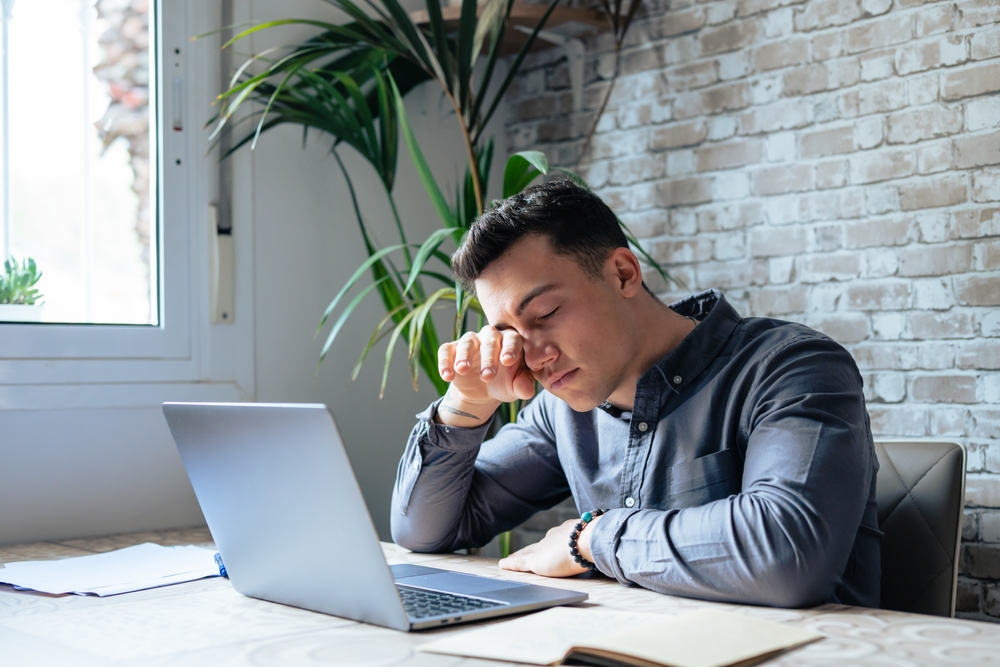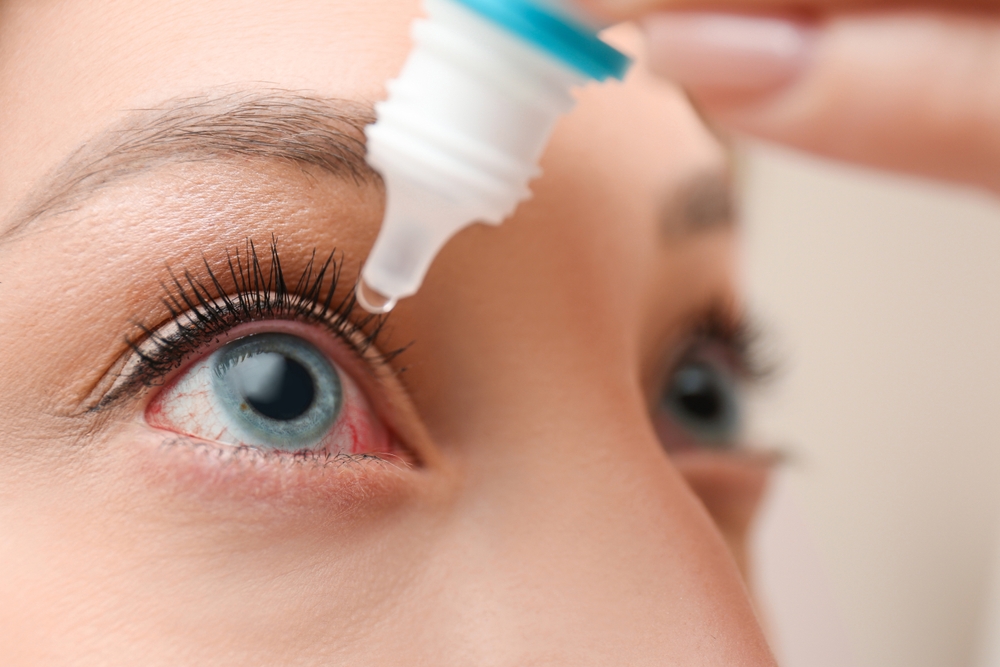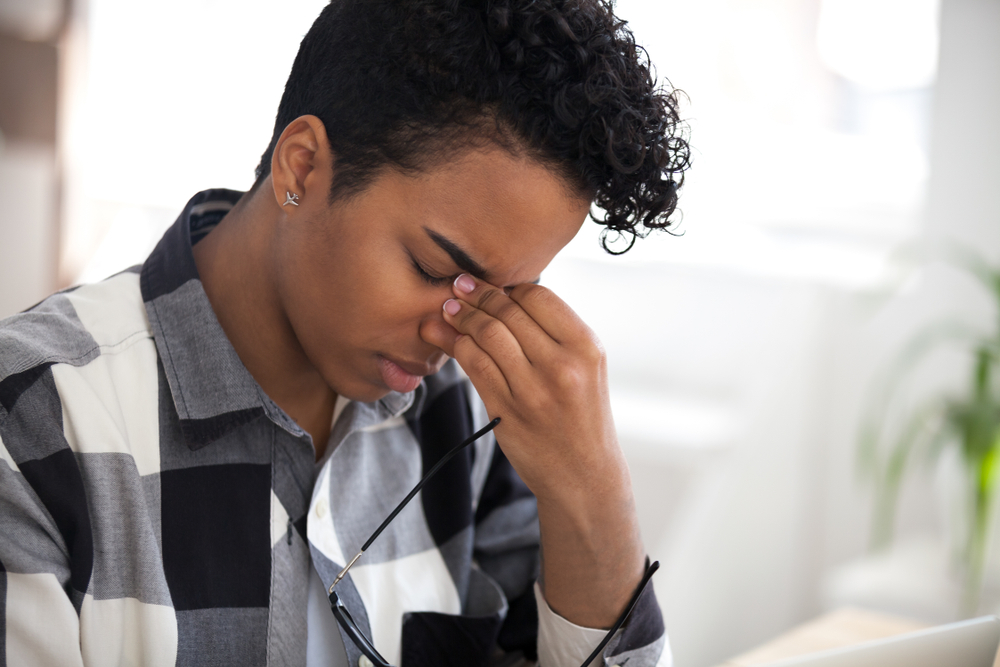How to Choose the Right Eye Drops for Dry Eye Relief
May 8, 2024
If you are experiencing the symptoms of dry eye, you are not alone. Dry eye is one of the most common eye conditions.
When diagnosed with dry eye, often the first thing your eye doctor will do is tell you to increase your use of lubricating eye drops. With all the eye drop options available, choosing the right eye drops for dry eye relief can be difficult.
Keep reading to learn more about dry eye and which drops to consider for relief!
What is Dry Eye?
Dry eye is a common eye condition that occurs when your tears are unable to provide adequate lubrication for your eyes. Factors like age, lifestyle, allergies, eye injury, certain medications, chronic health conditions, and the environment can all cause dry eyes.
In healthy eyes, the lens is covered by a thin film of tears, which keep the surface of the eye lubricated, wash away potential eye irritants, and promote clear vision. Every time you blink, fresh tears are produced to ensure continual eye support and protection.
Healthy tears consist of three layers: the lipid, or oil layer; the aqueous, or water layer; and the mucin layer. These layers work together to lubricate the eyes, prevent tear evaporation, nourish and protect the structures of the eye, and ensure tears stay on the eye.
The two main types of dry eye are evaporative dry eye and aqueous-deficient dry eye. Evaporative dry eye occurs when tears do not contain enough of the lipid layer, causing tears to evaporate too quickly.
Aqueous-deficient dry eye occurs when the eyes do not produce an adequate volume of tears. Some of the most common symptoms of dry eye include the following:
- Eye that sting, burn, or feel scratchy
- Blurred or impaired vision
- Excessively watery eyes
- Pronounced eye redness
- Heightened sensitivity to environmental factors, like wind or smoke
- Difficulty wearing contact lenses
- Eyelid inflammation
How Do Eye Drops Help Dry Eye?
Eye drops help dry eye by providing additional lubrication to keep eyes moist and alleviate dry eye symptoms. The type of eye drop that can best treat your dry eye largely depends on the cause of the condition.
There are three basic types of eye drops: lubricating eye drops, allergy eye drops, and prescription eye drops.
Lubricating Eye Drops
 Lubricating eye drops provide additional lubrication to the eyes by mimicking your natural tears. They can provide instant relief as they quickly lubricate your eyes upon application.
Lubricating eye drops provide additional lubrication to the eyes by mimicking your natural tears. They can provide instant relief as they quickly lubricate your eyes upon application.
If you have been diagnosed with evaporative dry eye, you should look for eye drops that contain lipid- or oil-based lubricants. These ingredients are formulated to help make tears more oily and prevent excessive evaporation.
Eye drops for aqueous-deficient dry eyes aim to increase the overall volume of tears in your eyes.
Allergy Eye Drops
If allergies are the specific cause of your dry eyes, the most effective choice might be an eye drop formulated to treat both dry eye and allergy symptoms. These eye drops contain antihistamines to minimize allergic reactions and soothe the discomfort caused by allergens.
Prescription Eye Drops
If over-the-counter eye drops are ineffective in treating dry eyes, your eye doctor may recommend prescription eye drops. Prescription eye drops can include anti-inflammatory or immunosuppressant medications to control dry eye symptoms.
What Other Treatments Are Available for Dry Eye?
Sometimes, eye drops alone are not enough to effectively treat dry eye. This is often true for people with aqueous-deficient dry eye, which is usually caused by problems with the physical structures of the eye or certain chronic auto-immune diseases, like Sjogren’s Syndrome.
OptiLight by Lumenis
One of the most recent innovations in dry eye treatment is OptiLight by Lumenis. OptiLight is a safe, non-invasive treatment that uses precisely administered light pulses to relieve dry eye symptoms.
OptiLight works by increasing tear break-up time, reducing microscopic eye irritants and bacteria, decreasing inflammation, and improving the function of the meibomian gland, which produces tear lipids. OptiLight is an in-office procedure that takes approximately ten to fifteen minutes to complete.
PROKERA
PROKERA is a corneal bandage that can be used to heal the eye and treat a range of eye injuries and conditions, including dry eye. It is most effective for dry eye caused by corneal damage.
PROKERA covers the cornea, promoting healing and preventing dry eyes. Its lubricating benefits can last for months after the bandage itself is removed.
Punctal Plugs
In some cases, the most effective treatment for dry eye might be the surgical implantation of punctal plugs. Punctal plugs are tiny ocular devices that are inserted into the corner of the eye to prevent excessive tear drainage.
Punctal plugs can be either temporary or permanent. Once implanted, they are usually completely unnoticeable.
While the right eye drop can provide relief from dry eye symptoms, the best way to protect the long-term health of your eyes is by scheduling regular comprehensive eye exams with a knowledgeable eye care provider like Chesapeake Eye Center. We can accurately diagnose dry eye and provide the most effective treatments possible!
Are you experiencing symptoms of dry eye? Schedule an appointment at Chesapeake Eye Care in Annapolis or Easton, MD, today!



